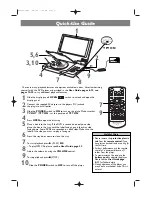
EN
2
USER MANUAL
Thank you for purchasing this top-quality product, made in Hungary, right in the heart of Europe.
Please read the operating manual carefully before first using the device. Please make sure that you
observe all the safety requirements. If you follow the instructions in the manual carefully, you will be
able to use the device safely and effectively for a long time.
WARRANTY
We have developed and manufactured this product to the highest quality standards. If the device
fails to operate properly, please turn to qualified service personnel for repairs. We offer a full, 24-
month warranty on the device.
EXCLUSION FROM COVER
The warranty does not apply in the cases below. Damage resulting from the following:
▪
Force majeure
▪
Improper use, particularly (but not limited to) non-observance of the operating instructions
described in this manual
▪
Non-intended use
▪
Connecting to an inappropriate electrical grid
▪
Repair or attempt at repair by non-qualified service personnel
▪
Using parts for the device not approved by the manufacturer
Damage to the ceramic tiles. The ceramic tiles are considered wear parts. Their lifespan is limited, so
they are not covered by the warranty, except for problems possibly resulting from production. Please
inform the distributor of the product immediately of such defects.
1.
INTRODUCTION
1.1
GENERAL INFORMATION
This chapter provides general information on ozone, how this manual is to be used, safety concerns
regarding how ozone may be used, and certain technical data.
1.2
BASIC INFORMATION ABOUT OZONE
Ozone (O
3
) is an unstable molecule containing three oxygen atoms. The name derives from the Greek
word
ozein
which means “reeking”.
Ozone is one of the most powerful oxidants and disinfectants.
When applied to water, depending on the microorganisms there, it is 600
–
3000 times more effective
than chlorine. When it comes in contact with any type of microorganism, such as bacteria, viruses,
mildew, fungus, odour-causing elements or dissolved oxidizable minerals, it simply destroys them.
Unlike with traditional chemicals, the oxidation process by ozone is so effective that the
microorganisms cannot build up an immunity. This extraordinarily effective oxidation ability,
however, makes ozone poisonous to living organisms, such as plants, animals and humans. When
breathing it in, one may often experience a headache at the forehead. Because of its oxidizing effect
on the nasal mucosa, ozone gas has either a characteristic pungent odour or a smell similar to chlorine
–
in high concentration. The gas has no smell in low concentration. The upper limit of low
concentration is around 40 μg/m
3
, but the human nose quickly adapts to the smell and thus soon
stops noticing it.
Содержание PRO 30000 TS
Страница 32: ......



































